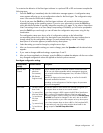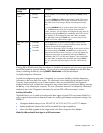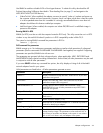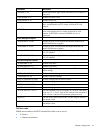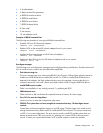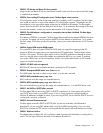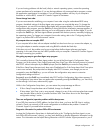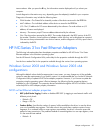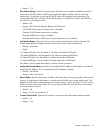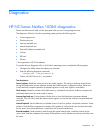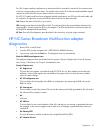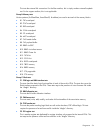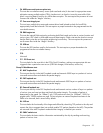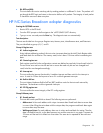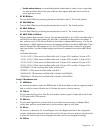Adapter configurations 50
team members. After you press the D key, the information remains displayed until you reboot your
computer.
Actual diagnostics information may vary, depending upon the adapter(s) installed in your computer.
Diagnostics information may include the following items:
• PWA Number—The Printed Wire Assembly number of the device as stored in the EEPROM
• MAC Address—The individual address of the device as stored in the EEPROM
• I/O—The I/O address for PCI access determined by the software. On cards without an I/O
address, all zeros are displayed
• Memory—The memory map PCI access address determined by the software
• Slot—The slot number reported by the BIOS. The number displayed is the BIOS version of the PCI
slot number. Therefore, actual positions of adapters within slots may not be displayed as expected.
Slots are not always enumerated in an obvious manner, and the diagnostics will only report what is
indicated by the BIOS.
HP NC-Series 31xx Fast Ethernet Adapters
The following information describes the adapter properties available for HP NC-Series 31xx Faster
Ethernet adapters in the Windows operating system.
See the HP Nework Configuration Utility online help for the properties available through the NCU.
See the Linux readme files for the properties available through the various Linux operating systems.
Windows Server 2003 and Windows Server 2003 x64
configurations
Although the default values should be appropriate in most cases, you may change any of the available
options to meet the requirements of your specific system. It is recommended that you use the HP Network
Configuration Utility to update HP NC-Series adapter properties. However, if you choose to update the
properties using the operating system's Device Manager, the following lists the properties that are
available for your HP adapter. The properties that are available through the HP NCU will differ. See the
online help file for NCU adapter property information.
NC31xx Fast Ethernet adapter properties
• 802.1p QoS Packet Tagging. Enables or disables IEEE 802.1p tagging to send network traffic with
different priority levels.
o Default = Off
o Range = Off; On
• Coalesce Buffers. Specifies the number of memory buffers available to the driver in case the driver
runs out of available map registers. This buffer area is also used when a packet consists of many
fragments. If no coalesce buffers or map registers are available, the driver is forced to queue the
packet for later transmission. The preferred method of transmitting data is to use map registers, since
it is the most efficient method.
o Default = 8



